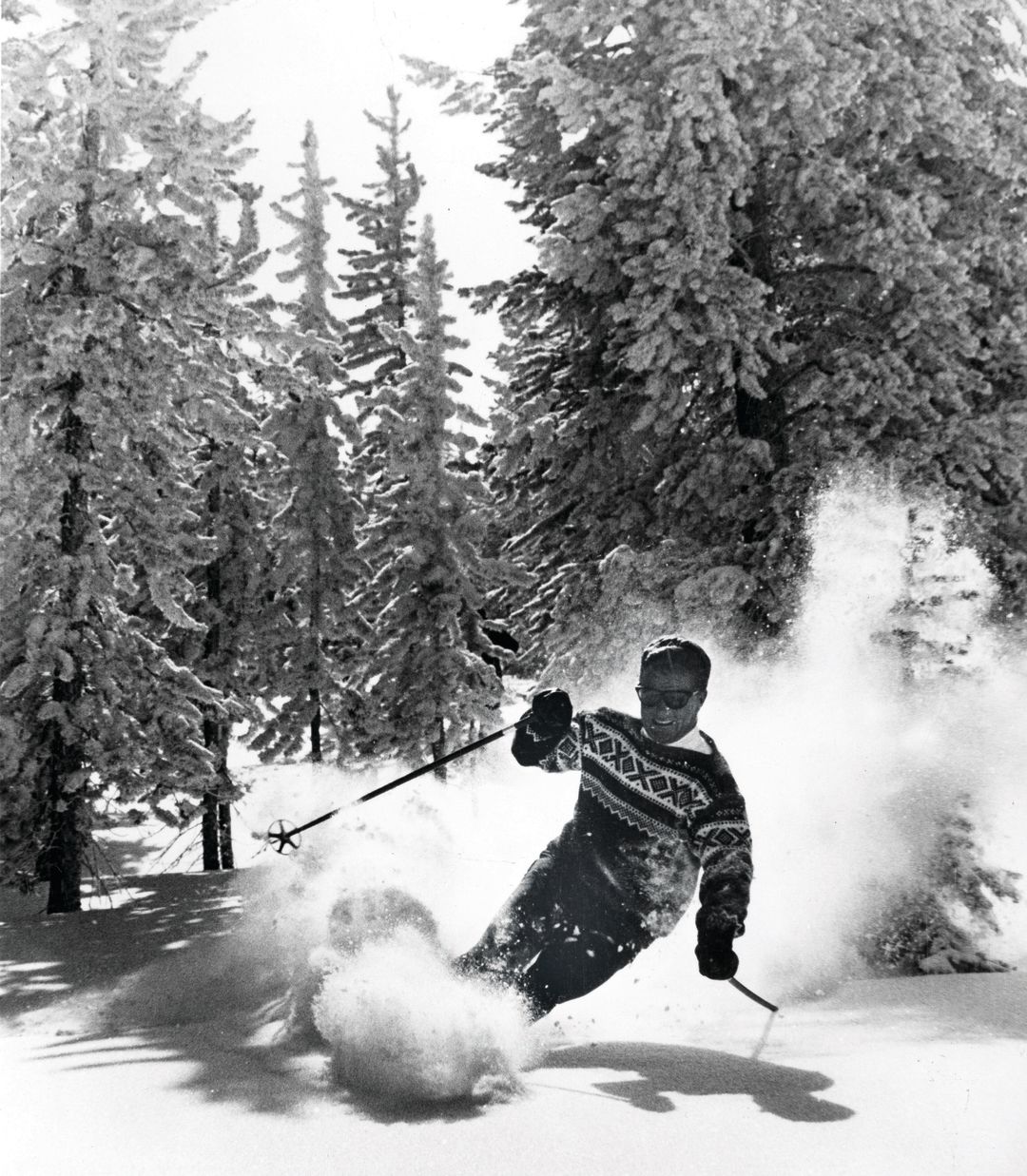A Ski God's Sendoff

Image: Aspen Historical Society
Utah’s Deer Valley Resort laid claim to Stein Eriksen more recently, but the legendary skier, who died at 88 on December 27, 2015, made one of his first American trips to Aspen, beginning a lifelong relationship with the town. He arrived from Oslo in fall 1949 to preview Aspen Mountain, site of the 1950 FIS World Championships. “I got to party for three months,” he told attendees at an 84th birthday celebration at the Hotel Jerome, with a nod to both Aspen’s reputation and the Norwegian penchant for guzzling aquavit.
But he also rode up Aspen Mountain with miners in their trucks and trained on the course. The result? “I put Norway back on the map,” he declared of his historic bronze in the slalom.
Two years later, in true cinematic fashion, Eriksen won gold and silver medals on home soil at the Oslo Olympics, the first Scandinavian to do so. And at the 1954 World Championships in Are, Sweden, he took home an unprecedented three golds. The handsome blond gymnast with the Paul Newman eyes became the world’s first matinee-idol skier.
Eriksen transitioned to running ski schools at U.S. resorts just when the business side of the burgeoning ski industry was beginning to boom, elevating him to full-blown legend status. The first ski school he headed locally was at Aspen Highlands in 1958. Already known for his elegant skiing style, based on his reverse-shoulder technique, Eriksen added acrobatics to his repertoire, performing big front flips weekly for spectators. In 1960 he starred in a Chevrolet ad, skiing alongside a new Corvair being driven down Aspen Mountain. His fame and flamboyance were perfect matches for Aspen’s rising tide of celebrity.
Native Norwegian and Aspenite Bente Godal taught for Eriksen at Highlands. “He was such a big star but always so warm, caring, gentle, and down to earth,” she recalls. “And he loved to have fun. When he found out some instructors were teaching students how to say, ‘Hello, how are you?’ in Norwegian, but it was really, ‘Hello, do you eat my shit?’ he laughed really hard. But he made us stop immediately, because he was very professional about the ski school.”
After eventually decamping to Sugarbush, Eriksen returned in 1967 to become director of skiing at fledgling Snowmass. Many who knew him, including the man himself, agreed that his greatest contribution to the local community was importing talented Scandinavian and European instructors (he estimated 30 to 40) .
One of them, Snowmass resident Kjell Vanhagen, recalls, “He had his style. He was the ski god of America, dressed to the T, usually in baby blue, and you never skied in front of him.”
That style and elegance, defining elements of the Eriksen mythos, could make him seem formal and aloof. But in fact, he was very accessible—to kids following him at Snowmass, to Aspen ski club teams he guest-coached, and, most of all, to his instructors. “When we partied, he was one of the boys, and he loved that,” says Vanhagen. “He drank aquavit and sang dirty drinking songs, and other things we can’t talk about in print. But I have videos,” he chuckles.
“We saw the other side of the graceful, well-dressed Stein Eriksen,” agrees Martin Nordhagen, another Eriksen import, “and it didn’t even take drinking for him—just any excuse to be with the boys. I don’t think he had more friends anywhere else than here.”
Ultimately, Eriksen teamed with longtime friend Edgar Stern, who developed Aspen’s Starwood neighborhood, to start Deer Valley Resort. He spent the last 35 years there as director of skiing and host at the renowned five-star lodge bearing his name. Until recently, Eriksen also owned an eponymous ski shop in Snowmass Village and downtown commercial property in Aspen, and he returned here for annual parties with his former instructors.
Fittingly, the annual Skiing History Week takes place in Aspen this year (April 5–10, skihall.com for tickets). The late Edgar Stern will be inducted into the U.S. Ski and Snowboard Hall of Fame, while the induction ceremony will include a video tribute to Eriksen.













































